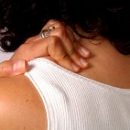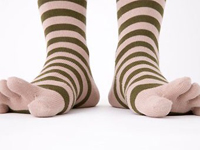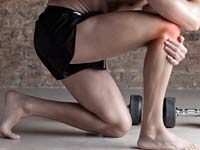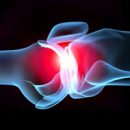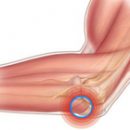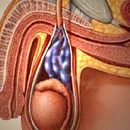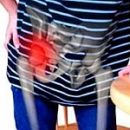What are the types of arthritis? What is the difference? How to be treated? Answers you will find in the article.
Content
Arthritis
Rheumatoid arthritis - An autoimmune disease, which leads to chronic inflammation of the joints, besides the devils and some other fabrics, organs and systems of the body are affected, so rheumatoid arthritis refer to systemic diseases.
Rheumatoid arthritis – Chronic disease, it has a gradually progressive course, sometimes intermittent with remissions (temporary improvement periods). Inflammation of the joint is characterized by its swelling, soreness and sometimes the appearance of redness. As already mentioned, at rheumatoid arthritis, both the olive fabrics may be inflamed – Bundles and muscles. Chronic fluid inflammation leads to the destruction of the articular cartilage and the occurrence of the joint deformation, which in turn disrupts its function – Pains occur when driving and refractory.
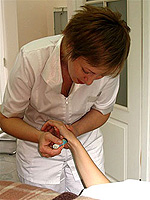 Jet Arthritis - Inflammatory non-negative diseases of the joints, developing after acute intestinal or urinary infection. The disease occurs more often in young men.
Jet Arthritis - Inflammatory non-negative diseases of the joints, developing after acute intestinal or urinary infection. The disease occurs more often in young men.
With reactive arthritis characteristic is the defeat of one of the joints of the lower extremities (knee, ankle). Perhaps the defeat of sacral-iliac joints. With reactive arthriteriadered, inflammation of bundles and tendons (for example, the defeat of Achille tendons). The damage to the mucous membranes can manifest itself with conjunctivitis, the development of erosions in the oral cavity, urethritis. On the skin of the plantar part of the stop, less often the palms appear painless focal or muffle seals – Keratodermia. In some cases, a damage to nails may occur (dystrophic changes).
Psoriatic arthritis – Chronic progressive diseases of the joints associated with psoriasis.
The prevalence of psoriasis in the population is 2-3%, and the prevalence of arthritis among patients with psoriasis ranges from 13.5 to 47%. Most often, psoriatic arthritis begins between the ages of 20 and 50, and the men and women fall differently often. There are cases of particularly severe flow of psoriatic arthritis in young men. The reason for psoriasis and psoriatic arthritis is currently unknown. Prevention of psoriatic arthritis is not developed due to the lack of knowledge about its reason. T.N. secondary prevention (t.E. Prevention of deterioration of patients after the start of the disease) aimed at preserving the functional ability of the joints and slowing the pace of progression of psoriatic arthritis.
Infectious arthritis It is a serious infectious disease of the joints, characterized by pain, temperature, chills, redness and swelling of one or several joints, as well as loss of mobility of affected joints. This condition requires emergency medical care.
Treatment arthritis
The treatment of arthritis should be aimed at reducing the manifestations of the disease, on the recovery of metabolism in the articular chance (t.E. Preventing further damage to cartilage) and the maximum preservation of the functions of the affected joints. Arthritis treatment involves eliminating the main cause of arthritis or treatment of the disease that caused arthritis. Based on this, depending on the nature of arthritis, the treatment of arthritis should be complex, long and systematic. It must include both the methods of exposure to rehabilitation processes in cartilage tissue and on the body as a whole, using non-farmcological, pharmacological and surgical methods of treatment of arthritis.
The neurmacological methods of treatment of arthritis refers:
- Therapeutic gymnastics, which should be held in the sitting position, lying or in water (t.E. without static loads) and should not cause increased pain in the joints. Fully excluded exercises on bent knees and squatting. Playing is recommended.
- Physiotherapeutic treatment: thermal procedures, ultrasound, magnetotherapy, laser therapy, igroreflexotherapy, hydrotherapy, massage, electrical appendant stimulation of muscles. Any physiotherapeutic procedures are carried out in the absence of contraindications.
- Getting rid of bad habits: unloading smoking, excessive consumption of coffee beverages.
Pharmacological methods of treatment of arthritis:
- Local therapy: the use of non-steroidal anti-inflammatory creams, ointments or gels; intra-articular or periarticular administration of glucocorticosteid.
- With moderate pains in the joints, simple painkillers (paracetamol) are used, with insufficient effects are prescribed non-steroidal anti-inflammatory drugs.
- At present, much attention in the treatment of arthritis is paid to drugs that are able to eliminate not only pain, but to prevent, slow down or expose the pathological processes occurring in the joints with arthritis. Such drugs are called chondroprotectors, t.E. Chiffing Protection Preparations. When they are prescribed, the pain often significantly decreases, the volume of movements increases, the joint function is restored. Chondroprotectors are well tolerated and very rarely cause side effects.
- Surgical treatment (endoprosthetics of joints), which is applied only with the most farm forms of arthritis.
Treatment of rheumatoid arthritis. Fully cure rheumatoid arthritis impossible. Modern treatments are aimed at reducing inflammation, improve the function of the joints and prevent the disability of patients. Previously, the beginning of treatment improves the forecast. Optimal treatment includes not only medication therapy, but also therapeutic physical education, lifestyle change and other activities. In the treatment of rheumatoid arthritis, two types of drugs are used: antiberial or high-speed drugs «first line» and slow appliances «second line» (they are also called disease-modifying or basic drugs). The first group of drugs include aspirin and hormones (corticosteroids), which remove inflammation and reduce pain. Basis preparations (for example, methotrexate) cause remission and prevent or slow down the destruction of the joints, but are not anti-inflammatory drugs. Surgical treatment is used to correct the pronounced deformations of the joints.
Treatment of reactive arthritis. General hygienic measures for the prevention of intestinal infections, the use of condoms to reduce the risk of infection with urinary chlamydia and other sexually transmitted diseases.
Treatment of infectious arthritis. Usually, in infectious arthritis, several days of inpatient treatment are required, followed by drug intake and physiotherapy sessions for several weeks or months.


